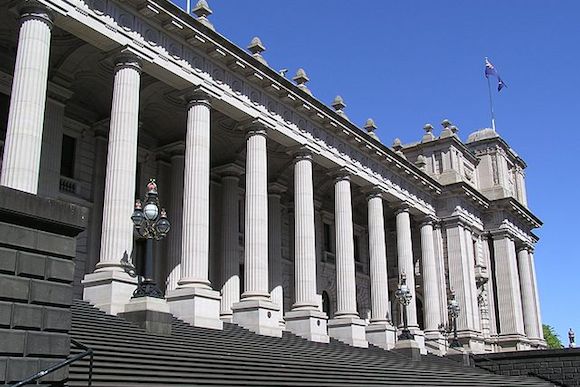Daniel Andrews and his new Ministers have been officially sworn in and the Premier has pledged to start working straight away on the many challenges facing Victoria.
With the highest unemployment rate on the mainland (6.8 per cent), a drawn-out pay dispute with the ambulance union, and a shrinking manufacturing industry, the new Premier has no shortage of jobs to tackle.
Added to this is the budget pressure from billions of dollars of campaign promises for new hospitals and schools, increased TAFE funding, level crossing removals and the scrapping of the East West Link.
So just what are the priorities in each portfolio and where should Labor start?
THE ECONOMY
The new Victorian government faces significant constraints to its budget with a weak economy and budget promises. At the same time, new policy initiatives are required to provide an attractive environment for business investment, more jobs, and continuation of “the most liveable place” in which to reside. Victorian economic growth at 1.7 per cent over the last year is a half of the national average, and unemployment at 6.8 per cent of the workforce, with as many again wanting to work more hours, could rise even higher.
The incoming government has promised not to introduce new taxes, not raise existing taxes, and to maintain a budget surplus and the state’s AAA credit rating; plus the real risks of revenue costs with the write-off of the East-West tunnel project. A combination of promised extra outlays on the national disability support scheme, Gonski reforms to education and infrastructure investments, together with changes in demography and health care technology, imply increased outlays. The constraints on available funds and additional expenditure commitments will require the government in its budgets to explicitly and transparently assess spending priorities, and to implement new technology and management practices to gain more valued added services per dollar of government expenditure.
State government policies can contribute in a number of ways to improve the attraction of Victoria as the location for footloose businesses to invest and to create jobs in the context of an evolving global economy. Transparent and simplified regulations for property rights and to correct significant market failures, infrastructure to support business productivity and to complement business investment, flexible labour markets to support innovation of new products and technology, education for a skilled workforce, and budget integrity and openness can make Victoria a more attractive location. Infrastructure Victoria will be vital to help in priority ranking of different infrastructure investment options, and to securing finance.
Reforms to the government supply of education, health, law and order, and infrastructure will be required to sustain the liveability of cities and rural Victoria. Often, the solution is not more money. Rather, the new government has to explore the use of technology, better management, and enhanced staff training methods to achieve more and better services per dollar spent, and at the same time offer more rewarding employment.
Successful reforming governments of the past have articulated and explained a package of public interest reforms. And, they have sought to minimise the role of self-interest lobby groups in the development and implementation of policy. Quality public servants are invaluable to generate ideas and to implement reform.
EMPLOYMENT
The incoming Andrews Labor Government has committed to getting Victoria ‘back to work’. On being sworn in, it will bring the Back to Work Act as one of its signature pieces of legislation of its first term. A major plank of the Back to Work agenda centres on investment in new infrastructure, including a minimum investment of $1 billion in upgrading regional roads and a re-direction of the Commonwealth’s multi-billion dollar commitment to the east-West tunnel construction in Melbourne, which will now be abandoned.
While the details of this piece of legislation are yet to be confirmed, it will enable the implementation of a number of core policy promises made during the election campaign, including the establishment of:
- A number of new industry advisory bodies, including: Infrastructure Victoria, Projects Victoria, and the Premier’s Jobs and Investment Panel, advise on priority investments in new infrastructure.
- A $500 million fund to invest in new projects and support job creation in growth sectors.
- A $200 million Future Industries Fund to support the accelerated growth of priority sectors, which include medical technology and pharmaceuticals, new energy technologies, food and fibre, transport, defence and construction technologies, education and professional services.
- A $200 million Regional Jobs Fund to invest in regional jobs.
- A$100 million fund which will be used to provide pay-roll tax relief for businesses who employ the long-term unemployed, workers who have been retrenched, or young workers currently unemployed.
The Back to Work policy will also look to expand Victoria’s investment and business promotion activities globally through the expansion of new Victorian Business Offices in South America, Singapore and Turkey.
These initiatives will need to operate alongside the Commonwealth’s recently announced Industry Innovation and Competitiveness Agenda, much of which echoes the approach to be pursued by an Andrews Labor Government. However, the Commonwealth has already set its sights on pursuing further labour market/industrial relations reforms, as well as other legislative reforms that are likely to present significant points of difference between the incoming Victorian Labor government and the Abbott government nationally.
The feasibility and effectiveness of the Back to Work policy initiatives also need to be evaluated in the context of the likely economic and political challenges this government will face over the next four years. The global economy outlooks continue to appear weak, and the Victorian economy itself will face the prospect of major economic disruption once Holden, Ford and Toyota depart in October 2016. Both these challenges may undermine the fiscal capacity of government to deliver on these commitments. Politically, the incoming Andrews government will need to broker peace with a large number of cross-benchers in the Legislative Council, including up to 5 Greens and a number of micro-party representatives. Just how these crossbenchers will respond to this ambitious Back to Work plan is yet to be made clear.
HEALTH
On the front cover of the Victorian Labor Party Policy for the recent election is an elderly woman in hospital. The polls have consistently shown that voters trust Labor more than the Coalition on Health. So it is obviously most important for the incoming Andrews Government that the new Minister for Health does, and is seen to do, a very good job. But health is not a fun gig. The easiest job in politics is being the Opposition Health Minister. The hardest is being the Health Minister.
I do not envy the incoming Health Minister Jill Hennessy. She will be burdened with a long list of promises which include a new Women’s and Children’s hospital in Sunshine, a major expansion of Casey Hospital and a new Heart Hospital in Clayton whilst at the same time cutting emergency room waiting times, elective waiting times and ambulance waiting times.
But the Health Minister, like David Davis the previous incumbent, will have to confront the ever-gathering, three-pronged ‘perfect storm’ – increased, almost insatiable community demand for health care, increased physician demand for provision of the latest treatments, and an ever increasing capacity to supply more expensive diagnostic equipment, patient management aids and pharmaceutical therapies.
This is compounded by a withdrawal of funding by the Commonwealth. The Victorian Healthcare Association predicts that the states will receive up to $50 billion less for public hospitals up until 2024 under the new funding formula announced in the May 2014 budget. In addition to this we are already seeing, according to Stephen Duckett from the Grattan Institute, cost shifting of $1.5 billion from the Commonwealth Government to patients and consumers over the first twelve months of the Abbott government, which will have the greatest impact on the poorest.
I wish the new Health Minister all the best!
EDUCATION
Following Saturday night’s win, the Labor government is settling in to being in power. Traditionally, education and health have been seen as Labor strengths, and voter expectations are likely to be high.
The challenges facing Labor are significant, particularly in a tight fiscal environment. Chief among these is the rebuilding of the TAFE sector, which is still reeling from earlier cuts, and for which a clear vision of well-resourced but sustainable vocational education and training provision and what it can achieve needs to be built by the government. While responding to local concerns is important, the details of the big picture on what TAFE can realistically deliver across the state have yet to be filled in.
The government also needs to clarify in the near future what it hopes to achieve with the ten new technical schools: their role within the broader system, how they differ from existing well-established VET in Schools provision, and what the benefits might be. It will be essential to ensure that what is added complements, rather than duplicates, existing provision.
Tempting as it may be to try and differentiate, it’s also important for incoming governments to quietly retain the good policies of their predecessors. Australia faces declining student STEM achievement in school, low rates of STEM tertiary enrolments, and relatively high numbers of teachers teaching maths and science who do not hold qualifications in the area. Maintaining some previous policies, such as those supporting teacher professional learning in STEM and the attraction of staff into STEM teaching roles, will be vital.
In education there is a pattern of incoming governments making large structural changes, often flowing from ideologies rather than any serious research base. So, for example, the Coalition government on taking power made significant structural changes to the central Department of Education and Early Childhood Development office, amalgamated the regional offices, and devolved decision-making to schools. Left-wing governments, in contrast, may centralise administration. There is often a lack of research evidence that any of this has a major impact on student outcomes; worse, it consumes resources and breeds cynicism and weariness in teachers and school leaders, who shrug their shoulders at being on the restructuring merry-go-round yet again, unable to identify where to find help for a particular student or advice on how to tackle a difficult situation. Particularly given the short time lapse since the last set of changes, the incoming government should make structural changes based only on substantial concerns voiced by schools and sound research evidence.
Finally, the government needs to ensure it keeps a strong focus on improving teacher quality and develops a clear vision for professional learning priorities for teachers. Ensuring that the system attracts the best possible teachers, provides them with quality, evidence-based professional learning, and works hard to retain good staff will be essential if we are to improve the quality of students’ learning and support them to flourish.








